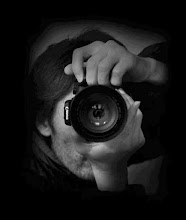 Dr David Stork is a research scientist from California, and he gave a public lecture at Melbourne Uni this evening.
Dr David Stork is a research scientist from California, and he gave a public lecture at Melbourne Uni this evening. It's really fascinating to hear that new computer technology plays a pivotal role in analysing art.
To make a point of what he does, he offered a vulgar example of photo manipulation, which was quite interesting.
There's a photo of Brad Pitt and Angelina Jolie walking on a beach with their children. It was supposed to be a "scoop", and the photo was sold to a women's magazine at whopping half a million dollars.
As it turned out, the light source of these people were inconsistent, it was poorly photoshopped.
With extremely complex mathematics and computer graphic modelling, he analyses paintings of historical importance.
For example, Vermeer's 'Girl with a pearl earring.'
He showed a very detailed research (without maths for us, thank goodness) on this painting, and concluded that the light source was correctly reflected on her cast shadows, highlights on her eyes and on the pearl....
Yes, Vermeer painted this, using a real model with one single light source.
He had an extraordinary power of observation and a masterful skill to render it on the canvas.
Amazing.
Something happened around 1430 in the history of painting.
There was a dramatic improvement, figures and perspectives suddenly became more realistic.
David Hockney proposed in 2001 that one of the reasons is that old masters started to use optical device to project subjects on a canvas (which is upside down), and then traced its contours....
Using his computer analysis, Dr. Stork successfully refuted some of Hockney's arguments.
For example, the most fascinating story for me was 'Portrait of Giovanni Arnolfini and his wife' by Jan van Eyck.
Hockney argued that the convex mirror in the portrait was used as a concave projection mirror to trace the image.
According to Dr. Stork's complex analysis, Hockney was wrong. The painting was done without it.
Also, the perspective of parts of the chandelier was consistently inconsistent.
It wasn't "perfect chandelier" as Hockney said.
These stories were really interesting.
Old masters used sheer human power to create these masterpieces.
So, what happened around 1430?
He suggested some factors.
First of all. Oil paint. Unlike tempera, oil paint dries far much slowly, giving artists plenty of time to work.
Second, around this time, Italian artists invented linear perspective, allowing them to create more naturalistic images.
Third, spectacles. Obviously, they helped artists to see more clearly.
Competition from realist sculptors, humanism, secularism......
"Did old masters cheat?" "Probably not."
I just loved this lecture.






No comments:
Post a Comment